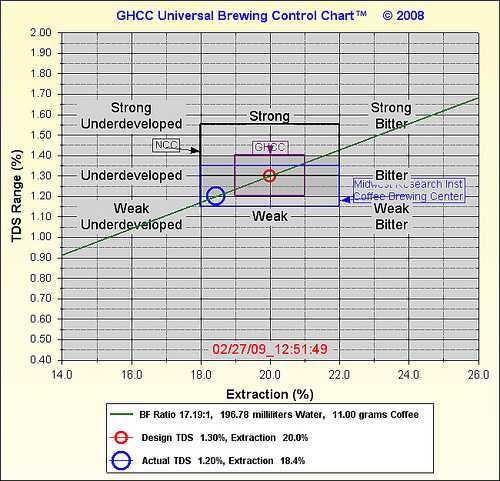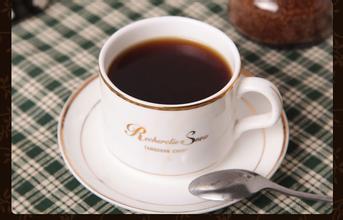Introduction to the operation, skills, proportion and utensils of hand-brewed coffee
Michael, the 2010 world champion barista. What Michael Phillips performs in the major exhibitions is no longer the old Espresso and pull flowers, but how to flush them by hand. The third wave of the most popular cafes in the United States, # StumptownRoasters# and # BlueBottle#, coincided with # IntelligentsiaCoffee#, adding a hand-rush bar or race bar next to the espresso machine, often so busy that three people and six hands began to attack and rushed together, unable to digest guest orders.
Therefore, the second wave of boutique coffee since 1966, the exclusive situation of espresso has gradually been broken by the third wave of boutique coffee after the millennium, with a more open mind, including Japanese hand brewing, competition style and smart filter cup elements. there is a great exotic taste from east to west, whether you like it or not, please accept the fact that boutique coffee has entered the # post-espresso era. Baristas only know how to play milk foam and pull flowers, which is no longer enough. They still need to develop their hand rush and race style skills in order to keep up with the pace of the times and meet the needs of coffee fans.

The history of hand-made coffee
At present, the third wave of coffee fashion hand-made equipment in Europe and the United States is almost entirely imported by Japan, and it is also the case at home. At first glance, hand-making seems to have been invented by the Japanese. In fact, hand flushing was not invented by the Japanese. As early as the beginning of the 20th century, it was already popular in Germany and the United States, but later declined, and it was refined and carried forward by the Japanese.
The filter paper is put into the filter cup, poured into the coffee powder and then brewed with hot water, which belongs to the more recent extraction method. In 1908, German housewife Merita. MelittaBentz,1873~1950 was the first to apply for the patent of filter paper and filter cup, which has been popular ever since. Before this, most Europeans used linen, flannel bags or metal mesh to filter coffee grounds, but there were many disadvantages. Although the filter cloth can filter coffee grounds, it will stink if you wash it every time you use it. As for the boiling pot (similar to today's mocha pot), the metal mesh is larger, it is not easy to filter out the fine residue, and it is easy to drink into the scorched residue. Every day, Melita began to experiment with a new method of filtering dregs in order to make a clean, dregs-free and non-bitter coffee.
She tried several filter materials and found that the blotting paper used in her son's homework book was the most effective. at first, she cut the blotting paper into a round shape and spread it on a copper pot with a small hole in the bottom, and became a virgin version of the filter cup. The function of the filter residue is excellent, and it is very convenient to throw it away after use. More importantly, the coffee is clean and sweet, and the bitterness is lower.
After several improvements, Merita filter paper and ceramic filter cups were patented in Germany in 1908 and sold very well in Europe, and the world finally drank clean and residue-free filter coffee. Melita has become the godmother of fan-shaped filter paper and filter cups. German Melita three-hole and four-hole filter cups are popular so far.
In addition, after German chemist PeterJ.Schlumbohm1896~1962 emigrated to the United States, he was inspired by the beaker in the laboratory. In 1941, he launched the follicular pot Chemex, which is a combination of filter cup and bottom pot, which is made of heat-resistant glass, and the filter paper used is about 20% and 30% heavier than ordinary filter paper, which is the most important feature and has been popular in Europe and the United States for more than half a century. It can be seen that the extraction method of hot water hand flushing and filter paper filtration has been popular in Europe and the United States in the middle of the 20th century.

Hand-brewed coffee utensils
The Chemex bubble pot is elegantly shaped, a bit like an hourglass, and a thin leather belt around its waist that is fastened to a thermal insulated pine board for easy grip, just like a sexy vest worn by medieval women. It is still a masterpiece of American hand-made aesthetics and has been listed as a collection by New York Modern gallery and Philadelphia gallery. However, the Japanese style is washed away by hand in China, and it is rare for the European and American follicle pot Chemex.
Interestingly, the hand flushing kit of Melita or Chemex originally did not include a hand pot, but carelessly watered the filter cup with a household hot kettle, which was far less exquisite and elegant than the carefully designed thin-mouthed hand pot in Japan. However, in recent years, Europe and the United States have introduced Japanese-style thin-mouthed hand pots to make Chemex, which fully reflects the Fusionstyle style of coffee fashion and the integration of the West and the East.
After 1960, the United States invented the electric trickling filter pot, commonly known as the American coffee machine, adding filter paper to remove dregs in the filter bucket, gradually replacing the more troublesome hand-made and scorched bitter mocha pots. The electric drip filter pot is easy to use, efficient and clean. It is still the most popular household coffee machine in the world. It is also inspired by hand flushing, filter paper and filter cups.

The skill of making coffee by hand
Hand brewing coffee is a typical example of a slow worker who can do fine works. the kit includes a hand pot, filter cup, filter paper and bottom pot. Although it is a little complicated, it can be made by hand as long as it has an electric thermos with a heat preservation of more than 90 ℃. There is no need for gas, alcohol lamps or sockets, so it is highly mobile and very convenient. The Saifeng kettle and the electric trickling filter kettle are boiled under the continuous heating of gas or electric power, and there is no temperature loss problem, but the hand flushing is extracted for 2-4 minutes without the heat source of electricity and gas. From the beginning of the hand flushing, the water temperature gradually drops, which can be called one of the most exquisite extraction techniques among all kinds of bubble methods.
If the handbrewed coffee is brewed at a higher temperature of 90 ℃ to 94 ℃, after 2-4 minutes of extraction, the temperature of black coffee has dropped to between 70 ℃ and 78 ℃. If it is brewed at a lower temperature of 82 ℃ to 89 ℃, the temperature of black coffee may drop below 70 ℃, which is the lowest inlet temperature of all kinds of bubble extraction methods. Therefore, some people who are used to drinking hot coffee are not used to the characteristic of warming their hands without burning them.
Hand flushing technology is good or bad, affecting the taste spectrum to a great extent, high-quality hand flushing is like Qiongjue liquid sweet and mellow, failure hand flushing, three points like acid corrosion water, seven points like bitter instant coffee. Hand pulping has many variables, either good or bad, due to the extraction water temperature and brewing time, which can be freely selected and regulated. It's good and bad. The disadvantage is that there are too many variables, it is not easy to pinch, and it is easy to be self-defeating. But the advantage is that according to the characteristics of different producing areas and baking degree, different extraction water temperature and time can be designed, and the playing space is infinite and challenging, which is also the reason why players are addicted to it.

Comparison of hand-brewed coffee
Basically, the coffee flavor spectrum interpreted by hand will be softer, brighter, smoother and layered than siphon style, and its sweetness is no less sweet. However, the thickness of the hand is slightly lower than that of the race style, which should be related to the fact that the filter paper will filter out part of the grease. If the filter cloth is used for hand washing, more grease can be retained, and the thickness is similar to that of the race style. Generally speaking, the competition wind is famous for its mellow and thick, and the hand Chong is famous for its elegant, sweet and sour fragrance, each with its own advantages.
Source: network
Important Notice :
前街咖啡 FrontStreet Coffee has moved to new addredd:
FrontStreet Coffee Address: 315,Donghua East Road,GuangZhou
Tel:020 38364473
- Prev

Coffee extraction formula and calculation method Analysis of coffee extraction rate, method and time
The extraction rate of coffee refers to the proportion of substances in coffee that can be extracted at most. The formula is as follows: Coffee Concentration = Weight of Coffee Extract Weight of Coffee Liquid Coffee Extraction Rate = Weight of Coffee Extract Weight of Coffee Powder Coffee Extraction Rate Calculation Method Friends who like to taste mojo and retro coffee may wonder why m
- Next

Italian espresso tasting method introduction to Italian espresso beans
Unlike other drinks, the visual assessment of coffee is not based on its transparency, concentration, or nuances of liquids. However, the appearance of the brewed coffee can provide us with useful information about the quality of the coffee brand and the brewer's technology. This explains why coffee cups and spoons, though opaque, can tell us the most important message: milky foam. This assessment.
Related
- What is the meaning of lactic acid fermentation with coffee bean treatment?
- How to judge the state of foam by sound?
- How does the latte pull out the unicorn pattern? Come to get for a little trick to improve the flower pull!
- Will flower pulling affect the taste of the latte?
- Do you know the history of coffee?
- The difference between honey treatment and sun washing what is raisin honey treatment?
- What kind of milk can a novice use to make coffee foam to keep the foam longer? The correct method and skills of milking tutorial sharing
- Why do washed coffee beans taste sour? Flavor characteristics of washed Coffee
- Introduction to the skill of how to practice the size and height of water injection around the circle of hand-brewed coffee
- How do beginners practice coffee flower drawing from scratch?

